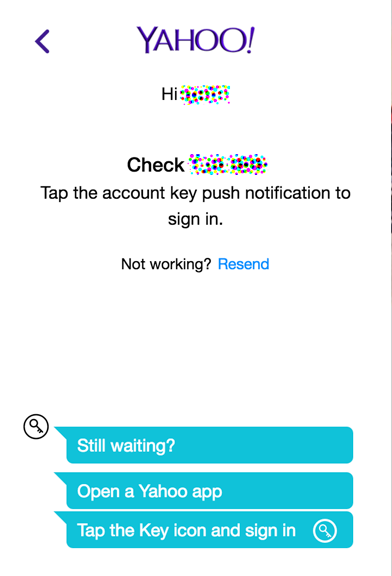U.S. representatives are asking Yahoo for clarity around a surveillance program mentioned in reports earlier this month.
Tag Archives: Yahoo
Verizon wants $1 Billion Discount on Yahoo Acquisition Deal after Recent Scandals
It seems like it is not all over for Yahoo yet. Another day, another bad news for Yahoo!
Verizon, which has agreed to purchase Yahoo for $4.8 Billion, is now asking for a $1 Billion discount, according to recent reports.
<!– adsense –>
The request comes after Verizon Communications learned about the recent disclosures about hacking and spying in past few weeks.
Just two weeks ago, Yahoo
![]()
Yahoo Slams Email Surveillance Story: Experts Demand Details
Yahoo calls a bombshell email surveillance story “misleading” as legal, civil liberties and security experts demand answers.
Yahoo Built a Secret Tool to Scan Your Email Content for US Spy Agency
Users are still dealing with the Yahoo’s massive data breach that exposed over 1 Billion Yahoo accounts and there’s another shocking news about the company that, I bet, will blow your mind.
Yahoo might have provided your personal data to United States intelligence agency when required.
Yahoo reportedly built a custom software programmed to secretly scan all of its users’ emails for specific
![]()
Uh oh, Yahoo! Data Breach May Have Hit Over 1 Billion Users
The massive data breach that Yahoo! confirmed to the world last week is claimed by the company to have been carried out by a “state-sponsored actor” in 2014, which exposed the accounts of at least 500 Million Yahoo users.
But, now it seems that Yahoo has downplayed a mega data breach and triying to hide it’s own security blunder.
Recently the information security firm InfoArmor that analyzed
![]()
Threatpost News Wrap, September 30, 2016
The latest on the Yahoo breach, Germany’s problem with WhatsApp-Facebook, Facebook’s osquery tool for Windows, and Zerodium’s $1.5M iOS bounty are all discussed.
Yahoo Challenged on Claims Breach Was State-Sponsored Attack
Experts challenge Yahoo’s assertion that state-sponsored hackers were behind a 2014 breach that resulted in 500 million lost records.
Congressional Leaders Demand Answers on Yahoo Breach
A number of Democratic Congressional leaders wrote Yahoo CEO Marissa Mayer a letter seeking answers about the breach of 500 million customer records.
Questions Mount Around Yahoo Breach
Crypto company Venafi points out potential holes in Yahoo’s processes and policies around cryptography and digital certificates, any of which could have been exploited in the breach to move data off the Yahoo network.
The secret security trick that will help protect Yahoo! users
Yawn, another data breach. This time it’s Yahoo! that’s affected. Despite news outlets proclaiming it’s the biggest breach of its kind, how many of us even lifted an eyebrow?
Are we in danger of becoming complacent when data breaches are being disclosed so frequently and seem to grow in size?
Every month, or less, another story hits the press about a data breach and we are told to hurry along and change our passwords. Now, don’t get wrong – this advice is good. Changing passwords, protecting email accounts, enabling two-step authentication and generally being more vigilant and secure about our online activities are all things that will help stop the bad guys getting too much access to our online life and private information.
But let’s consider the fact that the Yahoo! data breach, which happened in 2014, affects an estimated 500m user accounts and the data exposed may include email addresses, phone numbers, date of birth details, encrypted passwords and, in some cases, security questions. Even if you go and change your passwords today, there may already be an opportunity for cyber-criminals to reset or access your other online accounts as some of this information has already been released by the hackers.
In the face of a breach with such far-reaching implications, maybe it is not that we are complacent, but that we simply don’t know what we can do after the fact. There are a few simple actions we can take, however, that will help.
Stop trusting the traditional password and move to two-step authentication, if you haven’t already. This may sound complicated but it’s a concept you already know from every time you use your ATM card. You have the card and you know the PIN; but without both parts, the card will not work in an ATM machine.
For an online account, the two factors might be your phone and the contents of a text message sent to you at login. It doesn’t have to be inconvenient, either. Some companies only invoke this stronger login process when you try accessing an account from a new device, which seems like a good compromise.
For Yahoo! users, it might be a relief to know that Yahoo! has a fairly unique security system that is called account key. If you are about to change your Yahoo! password, I recommend taking the extra step and switching this service on.
It simplifies logging in by connecting your login request with the Yahoo! app on your phone. The browser login screen asks for your Yahoo! ID, then displays a page that says it’s waiting for confirmation to login.

Meanwhile, your phone will receive a notification asking you to confirm the login with a simple click of a button – yes or no.
![]()
![]()

